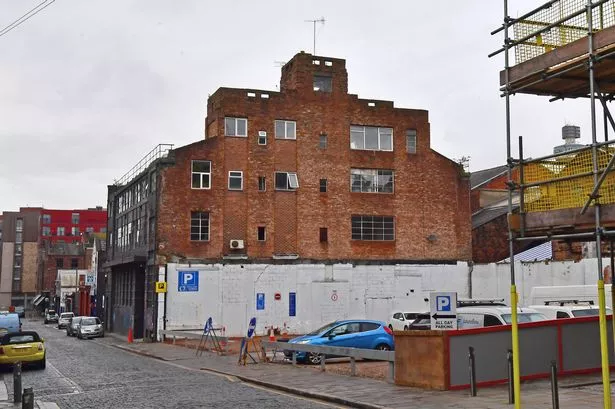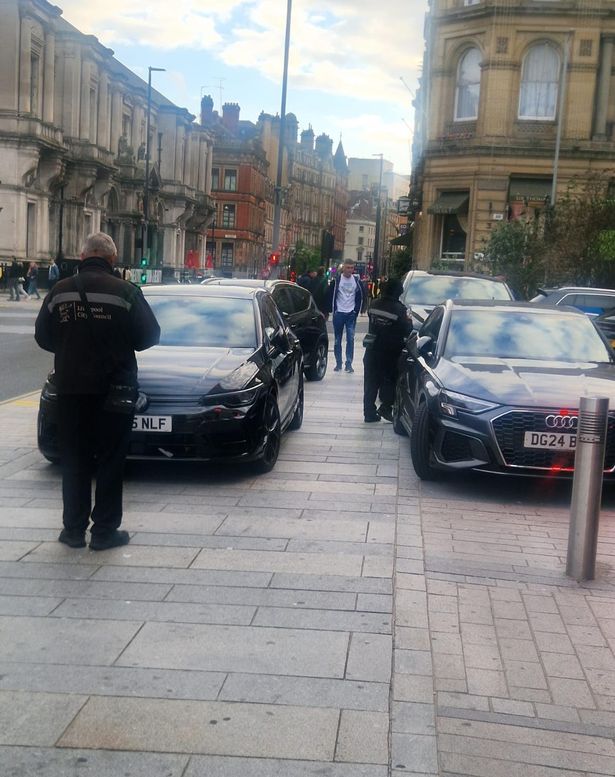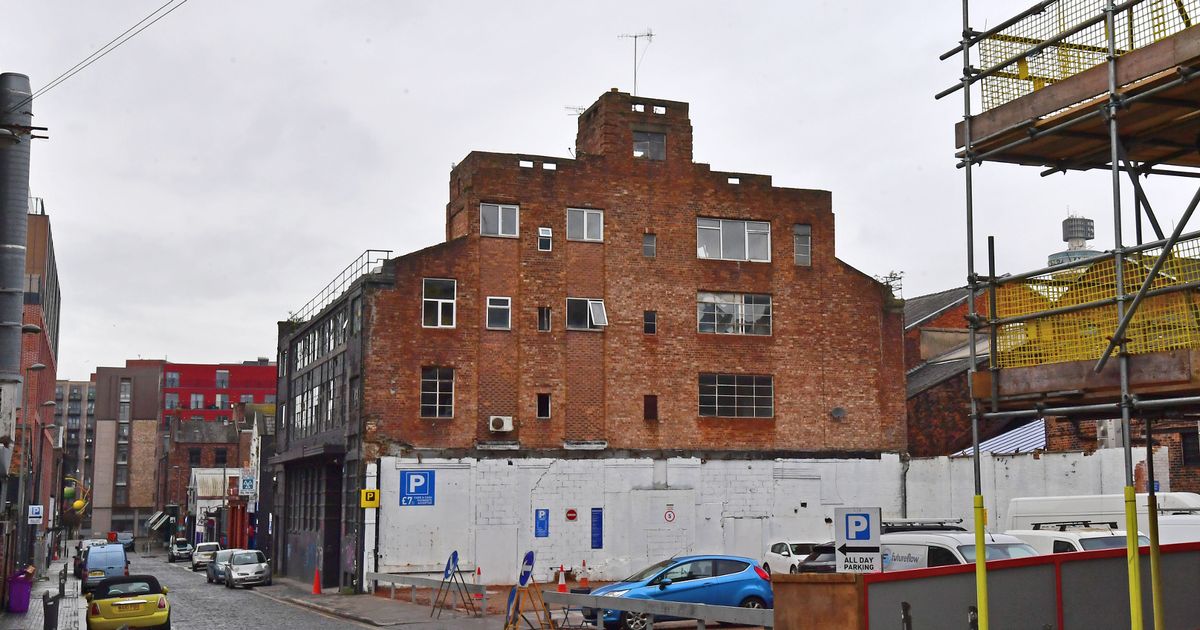From the removal of car parks to the introduction of a new parking tax and a potential new multi-storey facility – this is Liverpool Council’s major plan to change the way the city centre works Liverpool Council’s long-term vision is to reduce the number of people parking in the city centre(Image: Liverpool Echo)
Liverpool Council’s long-term vision is to reduce the number of people parking in the city centre(Image: Liverpool Echo)
A bold plan has been put forward to stop people from parking in Liverpool city centre. Liverpool City Council’s Parking Strategy has a key aim of reducing the ability for people to drive into and park in the city centre.
The major strategy – which will be rubber-stamped by the council’s cabinet later this month – includes bold plans to reduce city centre parking, including the removal of existing city centre parking sites, a potential tax on employers with parking spaces and plans for a new multi-storey car park on the outskirts of the city centre.
In the report, the council states that parking provision within the city centre is a “key enabler for vehicle movements in the heart of the city, as it draws in private vehicles leading to congestion, poor air quality and increased conflict with pedestrians and cyclists.”
The new parking strategy sets out what officers are calling a “bold vision for the consolidation and relocation of city centre car parking.”
They say this will make better use of the space available for the public within the heart of the city, will improve the public realm for pedestrians and will provide suitable parking provision in the right locations. Any reduction in parking will need to be matched with improvements to alternative modes of travel.
The report adds: “Future car parks in the city will be better utilised through the consolidation of spaces across the area, with poorly occupied car parks that currently take up valuable city centre space becoming a thing of the past.”
So how does the council intend to do this? Well firstly, it is important to note that this document is a strategy with ambitions and long-term aims, but there are some specific proposals mentioned geared towards stopping people from parking in Liverpool city centre. We have summarised these key plans below.
Reduce city centre parking
The council intends to identify private car parks and on-street parking within the city centre that could be “rationalised or removed”. The focus here will be on private car parks which are associated with specific destinations which are no longer in use, as well as on-street parking which is currently time-restricted.
There will also be a focus on what are referred to as ‘Interceptor Car Parks’, which have onwards links to the city centre through public transport routes.
The report states that the council’s various plans and policies “support the reduction of city centre car parking to ensure that free or very cheap parking in the city centre is no longer available, making convenience come at a cost.”
It adds: “The removal of on-street parking will provide opportunities for the reallocation of space towards active travel, public transport and increased public realm and amenity space. A rationalisation of car parks in key central locations will provide opportunities for development and green space in key locations.”
Parking permits and pricing for the workplace parking levy
In the new strategy, the council says it will review its existing residents’ parking permit scheme and consider making changes. Streets which are currently eligible for the permit scheme will be assessed. Existing business permits will also be reviewed.
There is also a vision for a new resident-controlled parking zone to form a ring around the city centre in a bid to encourage commuters to use car parks in peripheral locations and to encourage the use of alternative modes of travel.
Another bold policy option within the document is for Liverpool to follow in the footsteps of places like Nottingham by introducing a new Workplace Parking Levy (WPL). This is an annual charge for employers to pay for workplace parking spaces they provide.
The council said this tax could be applied in relevant areas of the city centre to “reduce the provision of destination parking”. The report points out that Nottingham’s WPL raises £9m per year for the council.
New multi-storey car park
As part of its vision to reduce car parking in the city centre, the parking strategy calls for an assessment of the feasibility of a new council-operated multi-storey car park and mobility hub in a new area of residential growth, such as the Baltic Triangle or the Fabric District.
The report states that such a facility would “consolidate car parking in areas of high residential density and remove on-street parking so kerbsides can be converted to better uses.”
The mobility hub, the report states, could “include a range of services and facilities, including car club spaces, electric vehicle charging, cycle parking, hubs for last-mile deliveries, cycle repair and e-scooter hire/parking.”
 A Liverpool Council parking officer is seen handing out tickets to cars parked on the pavement in Victoria Street
A Liverpool Council parking officer is seen handing out tickets to cars parked on the pavement in Victoria Street
Park and Ride
Park and Ride is seen as another key way to reduce the number of people driving into and parking in the city centre and the strategy suggests improving this provision around the city.
There is also a proposal to identify new areas for park and ride where it is not currently available around train stations and ferry hubs or at new stations like the Baltic Station being constructed at present.
With Metro Mayor Steve Rotheram planning to introduce new Bus Rapid Transit routes in the city in the next few years, there is also a vision to create new Park and Ride facilities to link up with this new form of public transport as well.
Enforcement
One of the biggest problems when it comes to parking in Liverpool City Centre is illegal parking. Whether it’s those leaving their cars on double yellow lines or selfish drivers parking up on pavements – this has become a major problem in the city centre in particular.
In its parking strategy, the council says it would like to expand parking enforcement so that it exists on a 24/7 basis alongside an increase in the number of civil enforcement officers working for the local authority.
There is also the suggestion to consider introducing so-called Red Routes, which are roads where stopping, parking and loading are restricted to prevent congestion.
What happens next?
The draft parking strategy will be discussed at a meeting of the council’s cabinet on Tuesday, October 14. If, as expected, it is agreed upon, then it will be adopted as an official strategy by the council to guide decision-making going forward.
The report states: “The Parking Strategy sets out the future aspirations for parking within the city, which will support the transition to sustainable travel, such as walking, cycling and wheeling, rather than driving everywhere.
“Ultimately it will result in a reduction in car parking within the central core of the city centre and encourage more use of public transport and/or active travel.
!The vision for the future of mobility in the city centre is one where people default to walking and cycling for their journeys where possible and choose to avoid using the car.”
